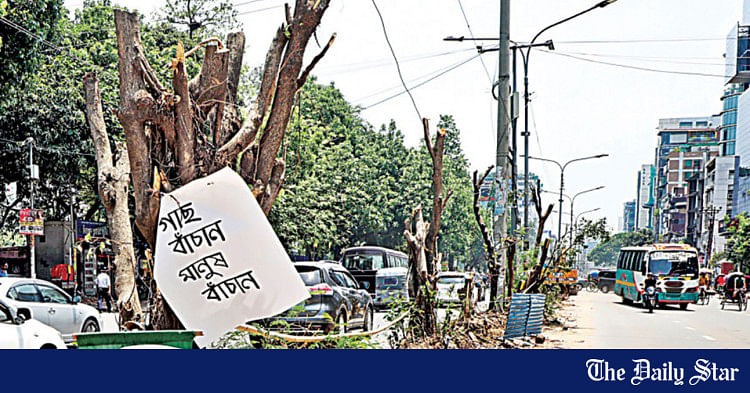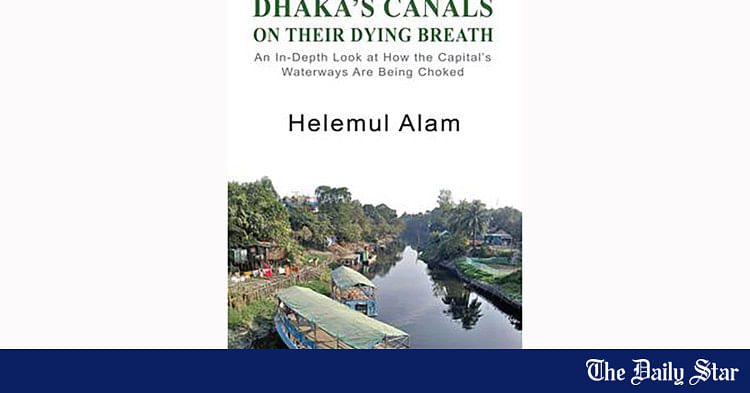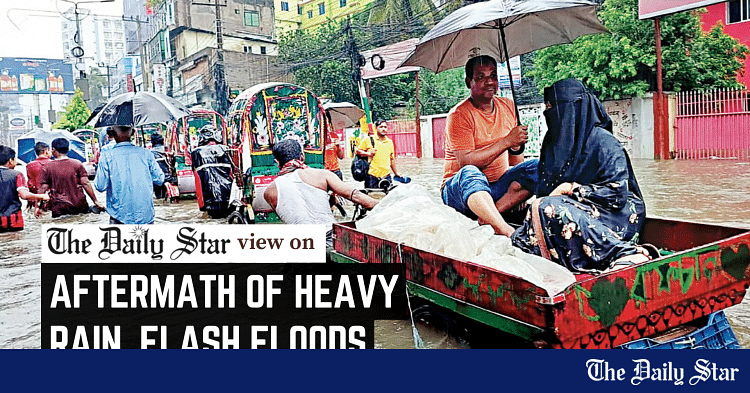Tackling the menace called air pollution
Muhammad Zamir
Published :
Jul 07, 2025 23:02
Updated :
Jul 07, 2025 23:02
Our activities, including the production of energy, heat, industrial goods, food, and transport pollute the air that we breathe in. There is general consensus that hundreds of thousands of citizens die prematurely every year in different parts of the world due to air pollution. Environmental analysts have been underlining the fact that we are paying for poor air quality in increased disease-burden, cognitive decline and mental health, healthcare costs, productivity loss and lower GDP. The most affected are the vulnerable in our societies: children and the poor.
Children and adolescents are particularly vulnerable to the adverse impacts of air pollution. Exposure to air pollution enhances the risk of asthma, reduced lung function, respiratory infections and allergies in children and adolescents. A high presence of carbon monoxide (CO), ozone, nitrogen dioxide, and Sulphur dioxide (SO2) pose significant risks to public health, resulting in morbidity and ultimately mortality. Heart disease, stroke, lung diseases and lung cancers are also attributed to air pollution. Studies also point to a link between exposure to air pollution and greater risks for diabetes, cognitive impairment, and neurological diseases.
Climate analysts have also underlined that the decision-makers have a tendency to ignore the synergies and co-benefits of addressing climate change, biodiversity loss and air pollution together but not in a comprehensive manner. This may lead to unwanted consequences and costs.
The benefits of cleaner air and the environmental impact of air pollution for people, societies, and economies are often ignored within the paradigm of policymaking. They are quite often overlooked during the implementation of policy and investment decisions pertaining to energy, agriculture and industry. We need to take on this problem carefully in a coordinated manner and also with inter-active management, particularly with regard to investment.
In this context it may be noted that while energy savings, energy efficiency and the switch to renewables have gained attention, we have also seen a push to burn more domestic resources like coal and biomass to produce electricity and heat, with devastating impacts on the air we breathe. Promoting e-fuels and bio-fuels as alternatives to fossil fuels in road transport also ignores the pollution these solutions create.
According to the European Environment Agency (EEA), nearly 96 per cent of the EU urban population is exposed to fine matter above the health-based guidelines defined by the World Health Organisation (WHO). The EU's current revision of its rules on air quality, as set out in the proposed Ambient Air Quality Directive, has been identified as a concrete step towards cleaner air.
However, analysts have observed that achieving and implementing ambitious targets on air quality will require effort, especially by all EU member states, sub-national authorities, and those economic sectors that contribute to air pollution, including energy, mobility, agriculture, and industry. This will not be easy. It has been revealed that economic costs of air pollution equal 3 per cent of the GDP in Germany and 2 per cent of the GDP in France. Such a matrix should persuade the rest of the world, particularly Africa, Latin America and South Asia to monitor how the European Union is trying to solve this problem.
Cleaner air improves people's health and productivity. Bad air worsens them. We need to understand that available evidence leaves no doubt about how important the air we breathe is for workers' productivity. Air quality impacts the performance of individuals and the workforce. Sick people are less productive. Air pollution also contributes greatly to growing social inequalities. The uneven distribution of the health consequences of air pollution is closely tied to socio-demographic disparities. There is great evidence of this in South Asia.
We need to understand that preventable health problems, leading to early retirement, sick leave, and poor educational or work achievement, can only be translated as loss of money. When air pollutants cause damage to ecosystems, crop yields, forests, and buildings, it tends to devalue our natural-based assets, infrastructure, and real estate upon which our industry, agriculture, and social well-being depend.
Climatologists have observed that air pollution and global warming are entwined. Ozone, black carbon and methane contribute to air pollution and global warming. Extreme temperatures exacerbate negative impacts of ozone on public health. Air pollution and biodiversity
We need to remember that functioning ecosystems are vital for purifying the air we breathe and that air pollutants damage our ecosystems and biodiversity, which are crucial for sustaining life, fighting global warming, and safeguarding our economy.
Climate analysts and medical specialists have also observed that ground-level ozone (O3) - created when air pollutants (NOx, NH3, CO) mix - can damage crops, forests and other vegetation, impairing their growth and affecting biodiversity. Apparently, nitrogen compounds discharged into the air can also eventually end up in water causing eutrophication, an oversupply of nutrients, which can damage life and biodiversity. Sulphur and nitrogen oxides, emitted into the air, can also eventually cause acidification of soils and water, which can negatively affect biodiversity. Air pollution and climate change are closely intertwined. Certain air pollutants -- O3 and black carbon - contribute to global warming. Methane is both an air pollutant and a greenhouse gas that also contributes to the ozone formation. Climate change can also worsen the impacts of air pollution on the environment and people's health. Global warming further aggravates the impacts of air pollution on biodiversity as plants become more vulnerable and less resistant to the intrusion of ozone.
Mark Pointing, BBC climatologist has observed that the Earth could be doomed to breach the symbolic 1.5C warming limit in as little as three years at current levels of carbon dioxide emissions. Apparently, that is the blunt warning from more than 60 of the world's leading climate scientists in the most up-to-date assessment of the state of global warming.
It may be recalled that nearly 200 countries agreed to try to limit global temperature rises to 1.5C above levels in a landmark agreement in 2015, with the aim of avoiding some of the worst impacts of climate change. However, countries have continued to burn record amounts of coal, oil and gas and chop down carbon-rich forests - leaving that international goal in peril.
"Things are all moving in the wrong direction," noted Prof Piers Forster of the University of Leeds. "We are seeing some unprecedented changes and we're also seeing the heating of the Earth and sea-level rise accelerating as well. These changes have been predicted for some time and we can directly place them back to the very high level of emissions".
It may be recalled that at the beginning of 2020, scientists estimated that humanity could only emit 500 billion more tonnes of carbon dioxide (CO2) -- the most important planet-warming gas -- for a 50 per cent chance of keeping warming to 1.5C. However, by the start of 2025 this so-called "carbon budget" had shrunk to 130 billion tonnes, according to the new study. That reduction is largely due to continued record emissions of CO2 and other planet-warming greenhouse gases like methane, but also improvements in the scientific estimates. Climatologists in this context have indicated that if global CO2 emissions stay at their current highs of about 40 billion tonnes a year, 130 billion tonnes gives the world roughly three years until that carbon budget is exhausted. This could commit the world to breaching the target set by the Paris Agreement. It may be remembered that last year was the first on record when global average air temperatures had gone up more than 1.5 C above those of the late 1800s.
Human-caused warming was by far the main reason for last year's high temperatures. If emissions stay high, the planet is on track to reach 1.5C of warming on that metric around the year 2030.
In 2024, Asia's average temperature was about 1.04°C above the 1991-2020 average, ranking as the warmest or second warmest year on record, depending on the dataset. The warming trend between 1991 and 2024 was almost double that during the 1961 to 1990 period. The High-Mountain Asia (HMA) region, centred on the Tibetan Plateau, contains the largest volume of ice outside the Polar regions, with glaciers covering an area of approximately 100,000 square km. It is known as the world's Third Pole. Over the last several decades, most glaciers in this region have been retreating. This is increasing the risk of glacier lake outburst floods (GLOFs).
In 2024, most of the ocean area of Asia was affected by marine heat waves of strong, severe, or extreme intensity-the largest extent since records began in 1993. During August and September 2024, nearly 15 million square kilometers of the region's ocean were impacted-one-tenth of the Earth's entire ocean surface.
Perhaps the most noteworthy fact is the rate at which extra heat is accumulating in the Earth's climate system, known as "Earth's energy imbalance" in scientific jargon. Over the past decade or so, this rate of heating has been more than double that of the 1970s and 1980s and an estimated 25 per cent higher than the late 2000s and 2010s. Dr Matthew Palmer of the UK Met Office, associated with the University of Bristol has in this regard observed, "This is a really large number, a very worrying number" over such a short period. He has also observed that the recent evolution upwards is fundamentally due to greenhouse gas emissions. However, a reduction in the cooling effect from small particles called aerosols has also played a role. It has also been mentioned that some of the extra energy goes into warming the land, raising air temperatures, and melting the world's ice and about 90 per cent of the excess heat is taken up by the oceans. This is leading to disruption for marine life, higher sea levels, warmer ocean waters and melting of glaciers. Such a scenario has led to increase in the rate of global sea-level rise, which has doubled since the 1990s, raising the risks of flooding for millions of people living in coastal areas worldwide.
Environmental analyst Professor Rogelj has candidly noted that "reductions in emissions over the next decade can critically change the rate of warming. Every fraction of warming that we can avoid will result in less harm and less suffering of particularly poor and vulnerable populations and less challenges for our societies to live the lives that we desire."
We in South Asia, particularly Bangladesh, need to understand the deteriorating climate situation and take necessary measures in this regard. We have to also comprehend that the Paris observations were based on strong scientific evidence and were a warning that needs to be carefully followed for geo-strategic reasons.
Muhammad Zamir, a former Ambassador is an analyst specialised in foreign affairs, right to information and good governance.













































